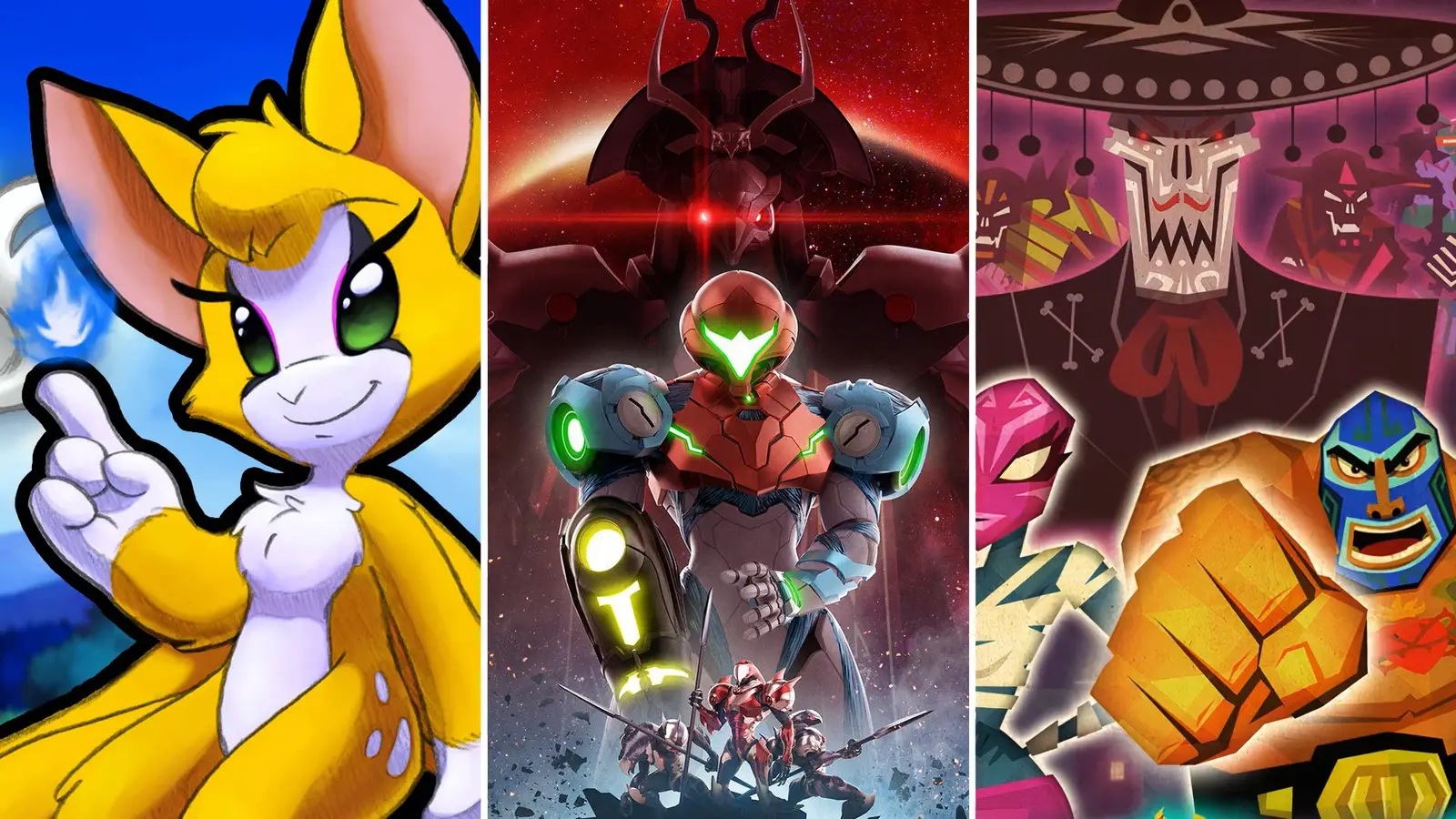If you really love Hollow Knight: Silksong, you have to play these challenging metroidvania games as well

Games like Hollow Knight: Silksong can scratch a particular itch for gamers who want to experience something they can get deep into. But at the same time, it can still offer a challenge for them to overcome, rather than graciously play through with ease. Like many other metroidvania titles that have come before it, Hollow Knight: Silksong has a good balance of exploration and trial by fire that fans of the genre can really get behind. For those who have already played through Hollow Knight: Silksong and want to see more games like it, there are still plenty of other releases to check out that offer something similar.
The most popular metroidvania titles are often tied to a major franchise, even though it’s not a requirement to be good. And yet, there are still games that are original experiences that give a great mixture of great levels to explore through, and fearsome foes to take on. Although not all of them may be as difficult as Hollow Knight: Silksong in many ways, they are still fun yet challenging to play that will satisfy any fans of this style of game. Here are a few other challenging metroidvania games that you should play, especially if you really enjoyed going through Hollow Knight: Silksong.
Guacamelee!
Being loco for lucha
Mexican culture and wrestling are intertwined like peanut butter and jelly. They go so well together in many ways. Within the metroidvania genre, fans of both have an indie game by DrinkBox Studios that brings that same combination into an experience for the PlayStation 3 and PlayStation Vita. Guacamelee! was released for both platforms in 2013, and was eventually ported over to PC later that same year. It has players taking control of a masked wrestler as he makes his way through the land of the living and the land of the dead, using a variety of attacks inspired by the Mexican wrestling style of lucha libre against enemies.
The game is heavily inspired by Mexican folklore, with characters and enemies that have many references and homages to Mexican culture throughout. However, the lucha libre style of wrestling is as much a part of the theme as the mystical elements, not only being played up for laughs but also for some of the more creative levels within the game. Many of the special moves and traversal abilities throughout each section of the map are named after wrestling moves, or have a funny wrestling reference to them, along with some word play with the Spanish language.
Guacamelee! can get very challenging in some sections, forcing players to use specific attacks to take out certain enemies, while also spawning a large group of them at the same time. Some of the game’s boss fights also require careful timing and quick reactions to capitalize on opportunities to deal big damage and overcome some challenging odds. The battles can get very chaotic, while the exploration through each new section of the maps can be intriguing, breaking up the chaotic battles for a bit before throwing players into a new challenge. There was an enhanced version of the game that released in 2014 for the PlayStation 4 Xbox One, and Wii U, which was titled Guacamelee!: Super Turbo Championship Edition. The game had new levels and bosses, along with previously released DLC packaged together with the main game. And later in 2018, a sequel to the game was released for all platforms.
Dust: An Elysian Tail
Beauty and beastly
If there’s one thing that can be said about Dust: An Elysian Tail that everyone can agree on, it’s how beautiful the game looks. Originally released on Xbox Live Arcade in 2012, Dust: An Elysian Tail was brought over to PlayStation 4 and Nintendo Switch in 2014 and 2018, respectively. The game blends together very solid 2D action gameplay with amazing character animations and level design, making a truly gorgeous game to look at in motion. At the same time, Dust: An Elysian Tail is no pushover for players with its challenging battles and vicious boss fights throughout its nearly 20-hour core experience.
The plot follows a warrior named Dust who suffers from amnesia after a vicious battle he loses. He comes across a sentient sword and its small guardian named Fidget, partnering up with them to restore his memory and survive in the harsh world they live in. The visuals of the game are filled with anthropomorphic animals in the roles of various characters, including enemies that Dust comes across on his travels. While there’s a ton of exploration across multiple environments, there are plenty of tough battles with enemies that appear in groups, as well as sub-bosses and major bosses to take down.
The game also has some characteristics of role-playing games, including leveling up from battles and using equipment to boost Dust’s capabilities. It’s heavily reminiscent of the genre’s most iconic title, Castlevania: Symphony of the Night, in many ways, and even includes a few clever nods to it hidden in the game. As things progress, new abilities allow Dust and Fidget to reach new locations with even tougher enemies, as well as new attacks to fight against them with. Anyone who loves playing through challenging games with great visuals to constantly look at throughout the experience would be smart to check out Dust: An Elysian Tail on any platform. It’s a hearty helping of visual eye candy that should not be missed.
Metroid Dread
The fear that lurks
In the metroidvania sub-genre, the Metroid series is a key part of the gameplay design that makes it so appealing to players. Metroid games have always set a high standard for other action games to aspire towards, especially those with new ideas to test out with players. But that doesn’t mean the Metroid series hasn’t released games that have pushed the standard of quality even higher, both in exploration and challenge. Metroid Dread is the follow-up entry in the series after developer Mercury Steam successfully remade Metroid II: Return of Samus with their work on Metroid Samus Returns for the Nintendo 3DS in 2017. Unlike that game, Metroid Dread is not a remake of a previous game, but instead a continuation of the franchise set after the events of Metroid Fusion.
What makes Metroid Dread different from its predecessors is not just the advancement of the series’ ongoing story, but its greater emphasis on challenging gameplay. Besides the many enemies that Samus Aran must blast through in every location she visits, she also has to contend with E.M.M.I. robots that cannot be eliminated through normal means, and must instead be avoided with some stealth tactics. This adds a new layer of complexity to the gameplay of the series, forcing players to figure out ways to not get detected while exploring new locations that open up throughout the adventure.
But that doesn’t mean the game is without its vicious encounters for Samus on her adevnture. There are still plenty of monsters to blast with her charging beam, as well as vicious boss fights to overcome. Many of the boss battles that Samus encounters have a greater cinematic presentation to them, but still require fast reactions and careful shots to bring down tough enemies. Some of the foes that she encounters are also references to previous Metroid titles, but with greater power in their attacks and remixed tactics needed to fight them. For a modern take on the classic Metroid formula, Metroid Dread felt like the natural evolution of the series’ roots onto the latest Nintendo hardware. It’s ominous with its environments to explore, but tough and challenging with its many battles that Samus Aran will come across, just like any great new Metroid game should be.
Taking on the challenge



